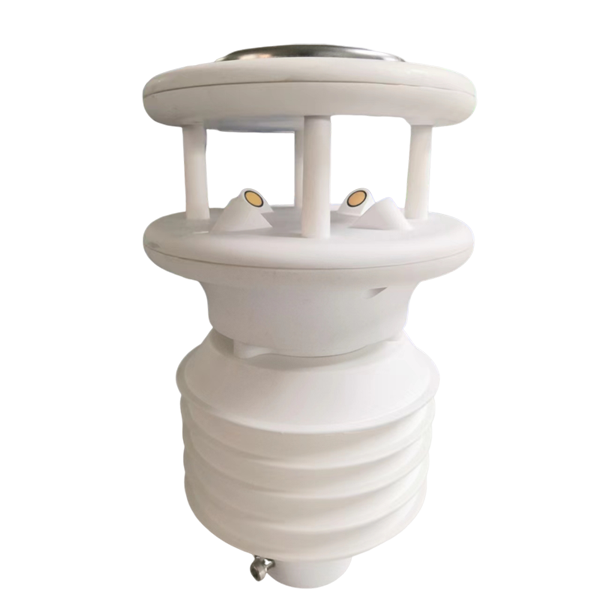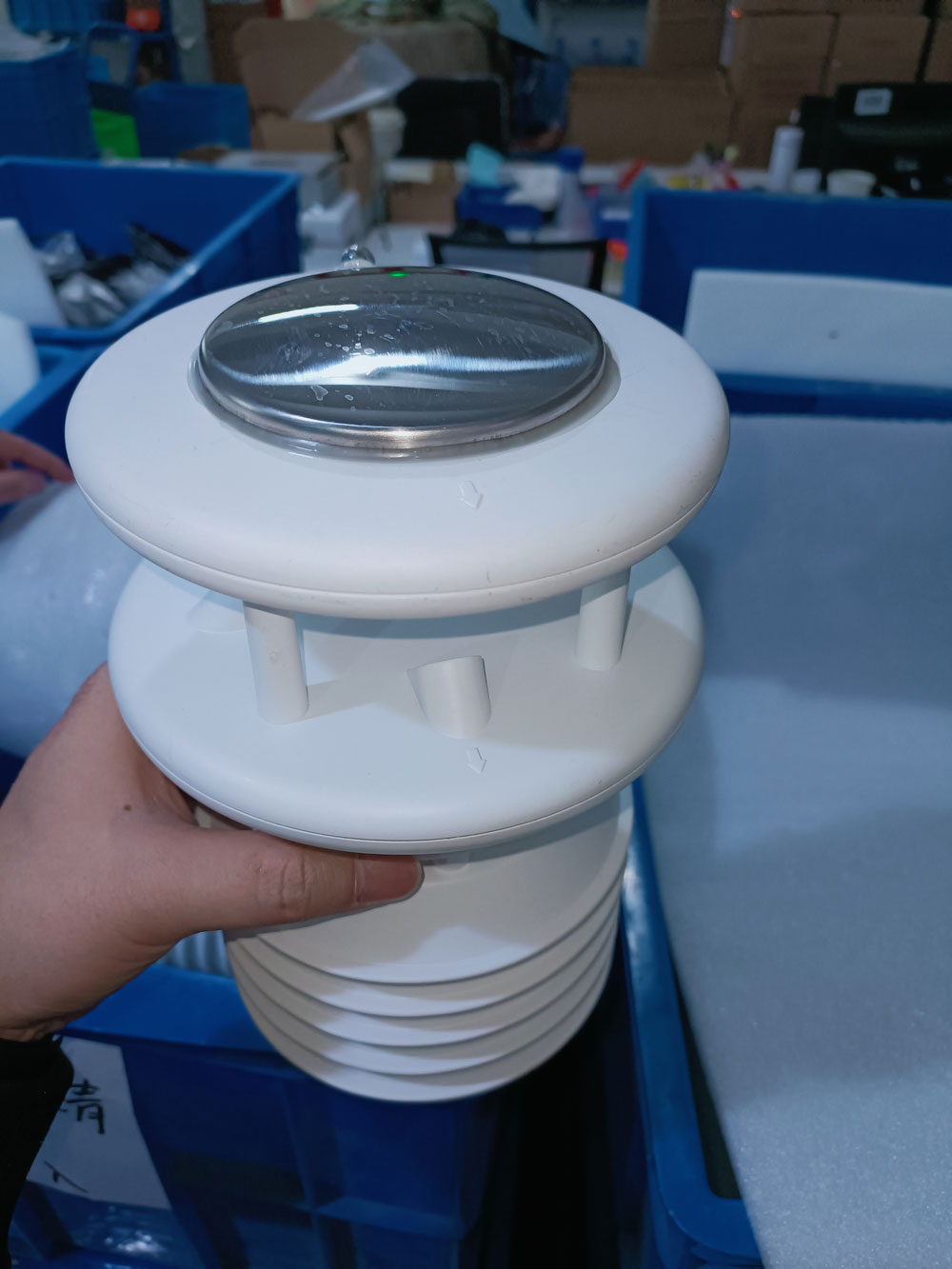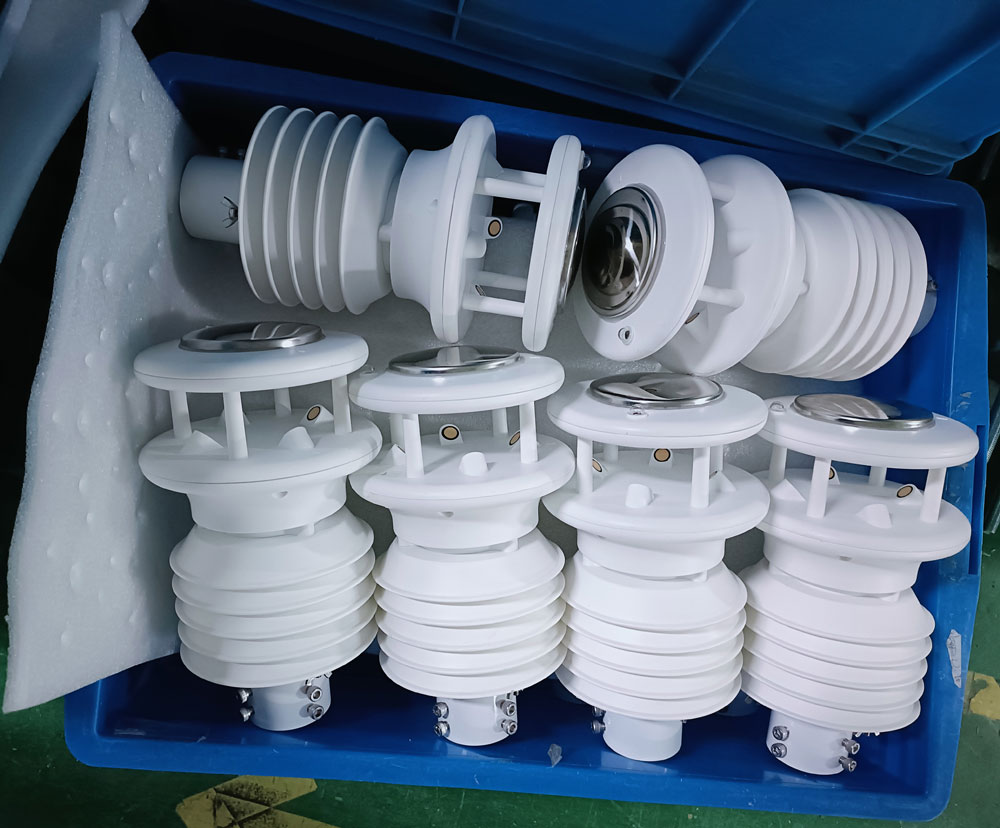

— Blogs —
—Products—
 Consumer hotline +8618073152920
Consumer hotline +8618073152920 WhatsApp:+8615367865107
Address:Room 102, District D, Houhu Industrial Park, Yuelu District, Changsha City, Hunan Province, China
Product knowledge
Time:2025-03-28 16:34:06 Popularity:100
The ultrasonic anemometer is a modern instrument that uses ultrasonic technology to measure wind speed and direction. With its high precision, reliability, and the lack of mechanical wear, it is increasingly favored in meteorological monitoring, wind power generation, aerospace, and other fields. This article will provide a detailed explanation of its working principle, core features, functional advantages, and specific applications in industries like wind power generation, helping readers gain a comprehensive understanding of this device.
 |  |  |  |  |
| Ultrasonic Snow Depth Sensor | All-in-One Ultrasonic Weather Station | 5 in1 Ultrasonic Weather Station Sensor | 6 in1 Ultrasonic Weather Station Sensor | 7 in1 Ultrasonic Weather Station Sensor |
The core of the ultrasonic anemometer lies in utilizing the characteristics of ultrasonic waves propagating through the air to detect the dynamics of wind. The measurement process is simple and efficient:
The instrument is equipped with multiple ultrasonic transducers (typically 2 to 4, symmetrically or angularly arranged). These transducers can both emit ultrasonic pulses and receive the returned signals. As the pulse propagates through the air, its speed is influenced by the wind speed and direction.
When the wind blows across the transducers, it alters the propagation time of the ultrasonic pulses. If the wind direction aligns with the pulse's direction, the propagation speed increases, and the time shortens. If the wind is against the direction, the time increases. By precisely measuring the time differences in different directions, the instrument uses algorithms to calculate the wind speed with an accuracy of ±0.3 m/s or ±3%.
The multi-transducer design allows the instrument to determine the wind's source angle by comparing the time differences in various directions. An integrated electronic compass further assists in accurate orientation, ensuring precise wind direction data with a resolution of up to 1°.
Modern ultrasonic anemometers typically incorporate advanced algorithms that automatically detect random errors and optimize the output. Even under high winds or turbulent conditions, the instrument maintains stable data.
This non-contact measurement method eliminates the limitations of mechanical components, allowing the device to operate stably in various environments.
The design of the ultrasonic anemometer grants it several notable advantages:
It can capture subtle changes in wind speed and provide full 360° coverage without blind spots, ensuring comprehensive and reliable data. This high resolution makes it suitable for applications requiring precise wind conditions.
Unlike traditional cup anemometers or wind vanes, the ultrasonic anemometer has no rotating parts, eliminating issues such as friction, wear, or icing that may lead to malfunctions. This significantly extends the device's lifespan.
There is no need to wait for mechanical adjustments. The instrument can instantly react to changes in wind speed and direction, making it especially suitable for real-time monitoring needs, such as aviation navigation or sudden weather alerts.
The casing is typically made of high-quality ABS engineering plastic, which is lightweight and corrosion-resistant. It can operate in extreme climates, such as marine salt fog or desert sandstorms. The lack of mechanical components also reduces environmental interference.
The built-in electronic compass eliminates the need for strict directional alignment during installation. As long as the device is horizontally fixed, it will function properly. With minimal maintenance requirements, there is no need for frequent replacement of parts.
Supporting wireless output modes such as 4G, users can monitor data in real-time via cloud platforms as long as there is network coverage, enhancing the flexibility of usage.
The ultrasonic anemometer demonstrates the following unique advantages in practical applications:
Whether in cold, freezing mountains, moist and foggy oceans, or hot and dusty deserts, it operates normally, far exceeding the capabilities of mechanical devices.
Thanks to random error identification technology, the instrument can output stable data even in high wind or turbulent environments, reducing the need for on-site calibration and lowering operational costs.
In addition to wind speed and direction, some models can also measure temperature, humidity, and other parameters. They support various interfaces (such as RS485, 4-20mA), making it easy to integrate into different systems.
Its low power consumption design allows it to be powered by solar energy, reducing energy consumption and aligning with green application requirements.

The wide applicability of the ultrasonic anemometer allows it to play a crucial role in multiple industries:
In meteorological stations and forecasting centers, it provides real-time wind data, supporting weather forecasting and climate research. Its high precision and stability make it especially suitable for long-term observations.
In wind farms, the ultrasonic anemometer is key to optimizing wind energy utilization. It can monitor wind speed fluctuations and wind direction trends in real-time, helping adjust turbine angles to improve efficiency. During extreme weather, it can also provide early warnings to protect equipment from damage, reducing operational costs.
Specific applications in wind power generation:
- Optimizing Wind Farm Layout
During the planning phase, the instrument monitors wind speed and direction over the long term, assisting engineers in selecting the best turbine locations to maximize wind energy utilization.
- Enhancing Operational Efficiency
Operating wind turbines need to adjust blade angles according to real-time wind conditions. The high-precision data provided by the ultrasonic anemometer ensures timely and accurate adjustments, improving power generation efficiency.
- Safety Warnings
During typhoons or high winds, the instrument can detect excessive wind speeds in advance, triggering protective mechanisms (such as shutting down or adjusting the orientation) to prevent equipment damage.
- Reducing Maintenance Costs
Its wear-free design and remote monitoring features reduce the need for manual inspections, improving the overall economic efficiency of the wind farm.
Airports use this instrument to provide accurate wind data for aircraft takeoff and landing, ensuring runway safety. Its rapid response capability is crucial for flight operations.
In air quality monitoring, it analyzes wind flow paths and assesses the spread of pollutants, providing data support for environmental policies.
In bridges, highways, or ports, it monitors crosswinds and sudden weather changes to ensure traffic safety and construction efficiency. For example, at construction sites, it helps prevent lifting accidents caused by strong winds.
Although the ultrasonic anemometer requires minimal maintenance, users should pay attention to the following:
- Protective Design: Ensure the device has waterproof and dustproof features (such as IP65 rating) to cope with harsh weather conditions.
- Regular Inspections: While frequent calibration is unnecessary, it is recommended to periodically check the cleanliness of the transducers and the power status.

With its ultrasonic-based measurement principle, combined with high precision, wear-free design, and rapid response, the ultrasonic anemometer has become the preferred tool for modern wind condition monitoring. From meteorological stations to wind farms, from airports to ports, it provides reliable support across multiple industries. In the wind power generation field, it not only enhances efficiency and safety but also contributes to the sustainable development of green energy.
All-in-One-Ultrasonic-Weather-Sensor-Instruction-Manual.pdf
NBL-W-61MUWS-Ultrasonic-Weather-Station-Instruction-Manual.pdf
Prev:Ultrasonic Integrated Weather Stations
Next:Ultrasonic Weather Stations: Technology and Multi-domain Applications
Related recommendations
Sensors & Weather Stations Catalog
Agriculture Sensors and Weather Stations Catalog-NiuBoL.pdf
Weather Stations Catalog-NiuBoL.pdf
Related products
 Combined air temperature and relative humidity sensor
Combined air temperature and relative humidity sensor Soil Moisture Temperature sensor for irrigation
Soil Moisture Temperature sensor for irrigation Soil pH sensor RS485 soil Testing instrument soil ph meter for agriculture
Soil pH sensor RS485 soil Testing instrument soil ph meter for agriculture Wind Speed sensor Output Modbus/RS485/Analog/0-5V/4-20mA
Wind Speed sensor Output Modbus/RS485/Analog/0-5V/4-20mA Tipping bucket rain gauge for weather monitoring auto rainfall sensor RS485/Outdoor/stainless steel
Tipping bucket rain gauge for weather monitoring auto rainfall sensor RS485/Outdoor/stainless steel Pyranometer Solar Radiation Sensor 4-20mA/RS485
Pyranometer Solar Radiation Sensor 4-20mA/RS485
Screenshot, WhatsApp to identify the QR code
WhatsApp number:+8615367865107
(Click on WhatsApp to copy and add friends)